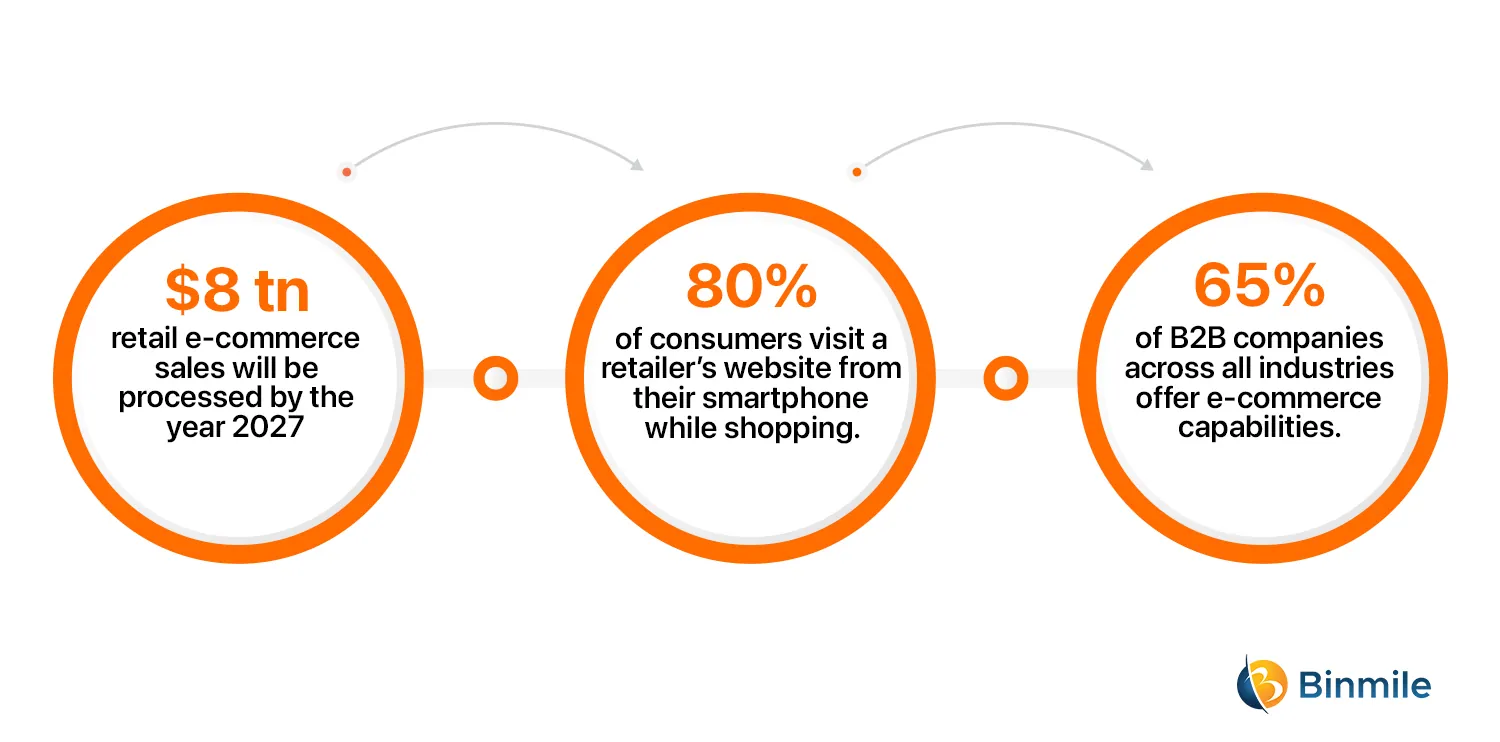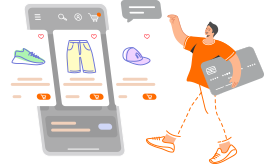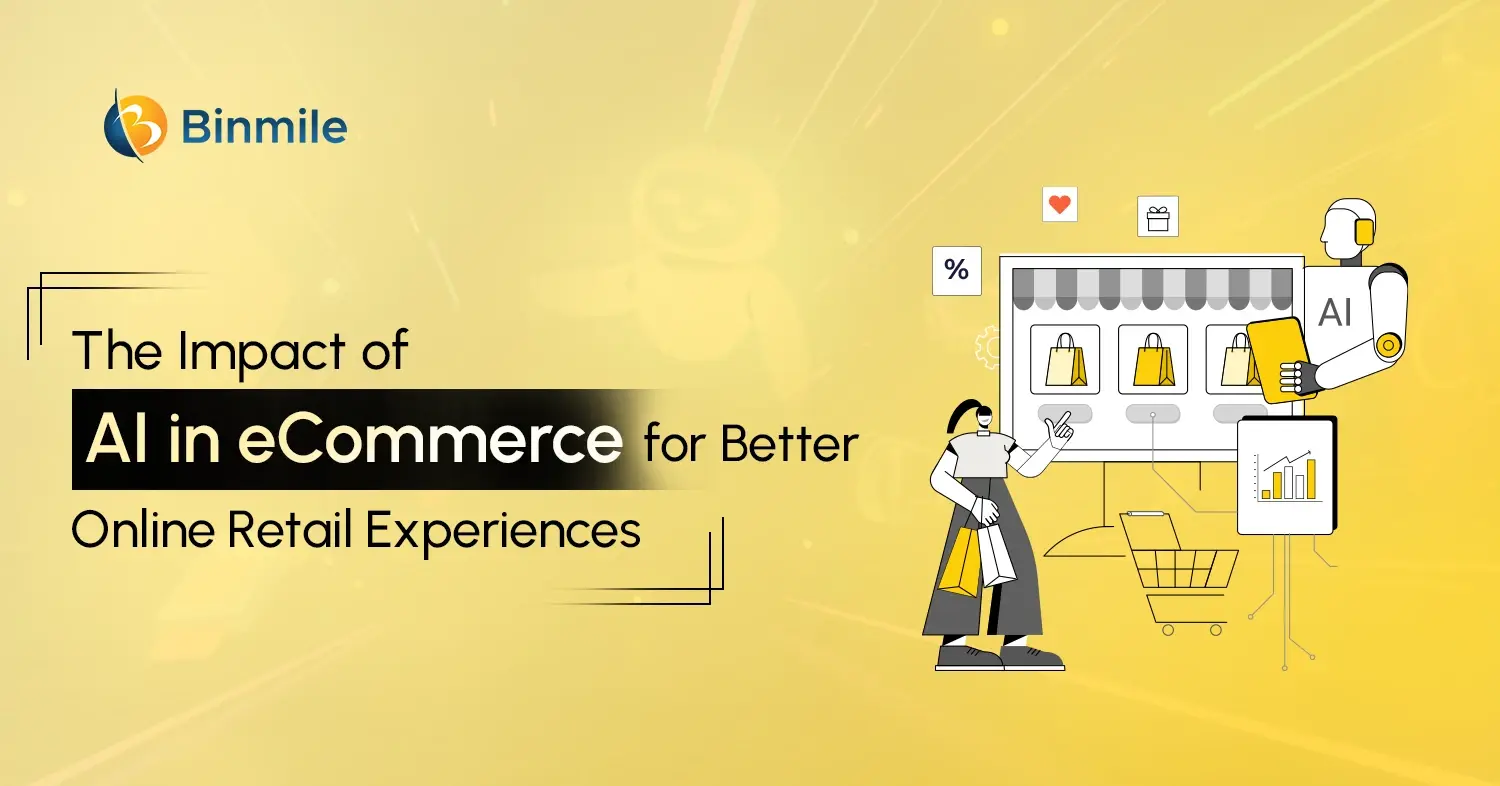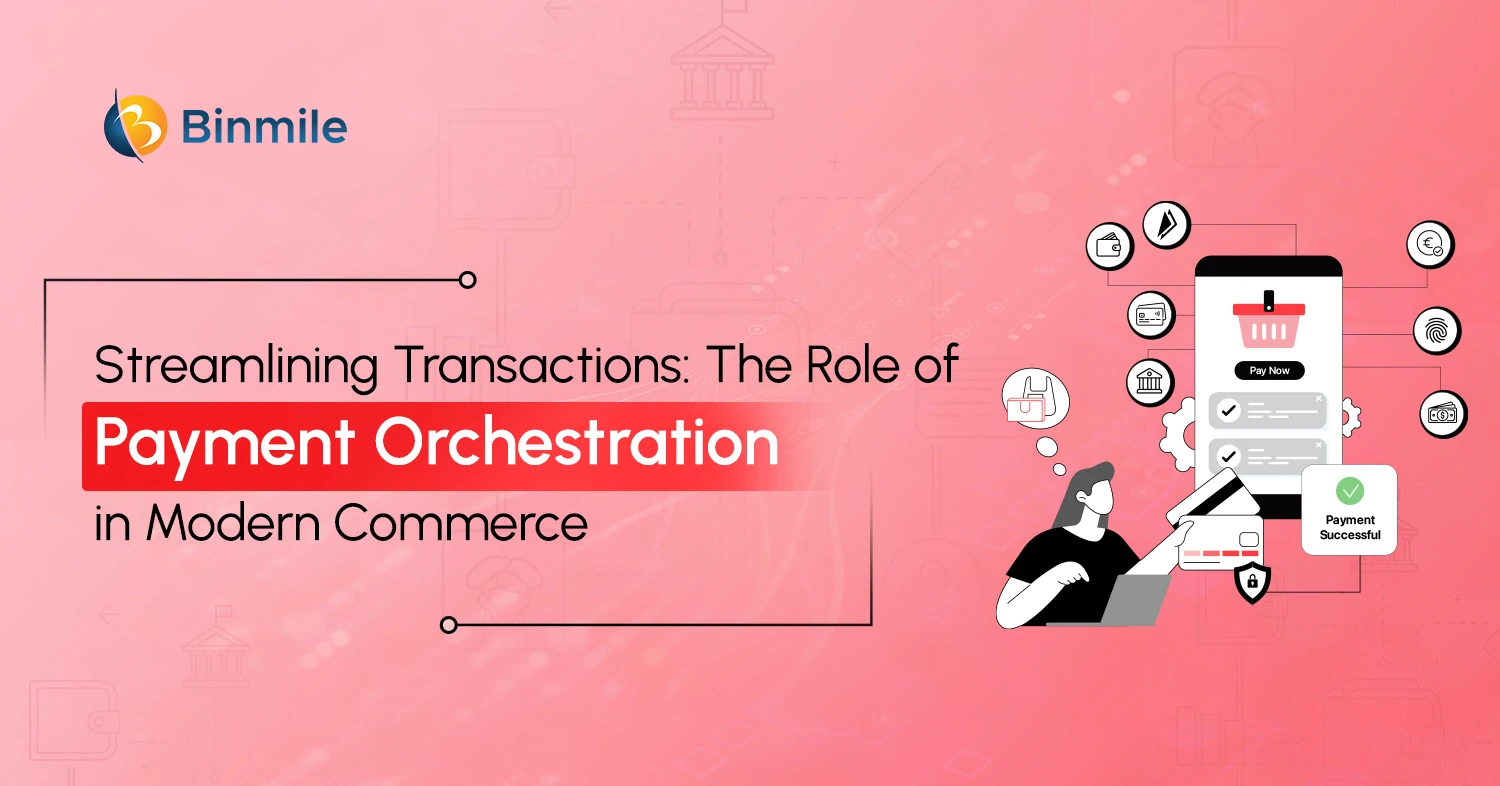- Benefits of integrating quick commerce with online stores
- Difference between quick commerce and e-commerce
- ecommerce and quick commerce
- ecommerce vs quick commerce business model
- Future of quick commerce and e-commerce in retail
- Impact of quick commerce on traditional e-commerce
- Instant delivery business models
- Quick commerce vs eCommerce
- quick commerce vs traditional e-commerce
- Quick-Commerce App
- What is Quick Commerce
- Zepto vs Blinkit
Would you rather wait 3 days for groceries or get them in 10 minutes? That’s the difference between e-commerce and quick commerce. But is faster always better? Modern customers riding on advanced technologies and multiple options demand speed. According to a PwC report, 88% of consumers are willing to pay more for faster delivery, driving the rise of quick commerce. This shift in consumers’ instant expectations has led to the emergence of two distinct online shopping models: quick commerce vs e-commerce. Earlier e-commerce dominated the landscape, but now there’s been a surge in new mCommerce trends favoring quick commerce. The global quick commerce market is projected to reach $71.94 billion by 2025, underscoring its rapid adoption.
From takeaway food to online shopping deliveries, the sooner a customer has their purchase in their hands, the better. While both involve selling products online, they differ significantly in terms of delivery speed and business strategies. After all, if you can get a packet of chips or groceries in a few minutes rather than a few days or a week, then surely you’d go for the apps that offer services super fast!
With the advent of technologies and rapid digitalization, a software development company dealing in app development services for electronic commerce has kept up with this continuous shift in delivery methods to meet the surging demand for speed and efficiency. Earlier it led to the emergence of e-commerce website development, and as technology advanced, this brought quick-commerce into the picture to meet the needs and expectations of the customers. Therefore, quick-commerce and PWA for e-commerce are both redefining the way we look at and undertake purchasing goods and services.
But what do both quick commerce and eCommerce mean? What makes them so different and still similar? Additionally, which model should your business go for? Let’s explore the key differences between quick commerce vs e-commerce, highlighting their top features and helping you determine which one is best suited for your business.
Difference Between Quick Commerce and E-Commerce

What is Quick Commerce: How Q-commerce Works, Popular Examples & Key Features
Q-commerce, or Quick commerce, is often known as ‘on-demand delivery’ and ‘e-commerce, but in a new, faster form. The quick commerce meaning lies in its ability to combine traditional e-commerce with innovations in last-mile delivery, ensuring ultra-fast fulfillment. The concept focuses on delivering items such as perishable goods, like groceries, with speed of delivery—not in days but in 30 or fewer minutes, to be competitive.
How Does Q-commerce Work?

The idea behind it is simple: delivering a customer a missing ingredient urgently for a recipe that’s already in motion. Simply put, the sooner the customer has their purchase in their hands, the better, with time ranging from 2 hours to 6 minutes. However, the magic isn’t happening in front of you, but the bigger, less visible magic is happening on the backend.
These Q-commerce owners, though not following the same business, most of them use ‘dark stores’—strategically located warehouses— to ensure a quick turnaround from order to doorstep. Few of them also leverage crowdsourcing labor, providing them with a fleet of individuals ready to spring into action at any moment. Similarly, utilizing other combinations, such as including adoption of the latest software and the layout of dark stores themselves, gives them the ultimate agility and flexibility required to adeptly respond to customer demand around the clock.
Notable Quick Commerce Examples: Uber Eats, DoorDash, BlinkIt, Zepto, GoPuff, Instacart and Swiggy Instamart, among others.
Top Features of Q-commerce Business Model
- Ability to deliver products within a short timeframe, often within minutes or hours.
- Typically focuses on a limited range of products, such as groceries, household items, and essential goods.
- A dense network of small warehouses or dark stores located close to consumers to enable rapid delivery.
- Offers a high level of convenience for consumers, thus allowing them to order products and receive them quickly without leaving their homes.
What is e-Commerce: How eCommerce Works, Popular Examples & Key Features
Electronic commerce, popularly referred to as e-commerce, refers to buying and selling goods and services over the Internet by companies and individuals. This model can operate via different types of market segments and can be conducted over computers, tablets, smartphones, and other smart devices. Customers can get nearly every imaginable product and service through e-commerce transactions such as books, music, movie tickets, and even financial services such as stock investing and online banking.
How Does e-Commerce Work?

Once the customer has finalized a product to buy, the customer’s web browser communicates with the web server handling the website, which processes the order and sends it to the order manager. From here, the manager checks the stock availability in the database and if the item is in stock, the system confirms the order and provides an estimated delivery date. If not, then it orders new supplies from manufacturers or wholesalers. Later, the merchant system processes the customer’s payment details, confirming sufficient funds in the customer’s account.
Once the transaction is authorized, the order manager updates the web server, which informs the customer of the order confirmation and transaction details. The order management system then requests the warehouse to dispatch the goods. The fleet system collects and delivers the goods to the customer, and the warehouse system emails the customer about the delivery status. Finally, the goods are delivered to the customer’s address.
Notable eCommerce Examples: Amazon, Flipkart, eBay, and Myntra, among others.
Top Features of e-Commerce Business Model
- Features a detailed catalog of products or services, is essential for e-commerce with descriptions, images, pricing, reviews, and availability information.
- Easy-to-access, high-quality, and responsive website with a search bar on the website and properly listed categories in the navigation bar.
- Provides personalized offers and deals, as well as other useful features, to make them feel special.
- Secured payment gateway for processing online transactions and protecting customer data, and around-the-clock customer support for inquiries, returns, or troubleshooting.
Create a seamless shopping experience & build a powerful e-commerce platform to convert clicks into loyal customers with our custom app development services!

Quick Commerce vs. E-Commerce: How to Choose the Right Model for Your Business Success?
Is consumer demand truly shifting—or is it just a passing trend? When comparing quick commerce app development with traditional e-commerce, there’s no definitive winner. Quick commerce caters to the growing need for instant delivery and convenience, while e-commerce continues to attract consumers with its wider variety and cost-effective options. Therefore, both have their distinct features, benefits, and challenges. So let’s understand the unique strengths of these two.

1. Delivery Time
- E-commerce typically offers standard shipping that takes 1-7 days, with expedited options available for 1-3 day delivery. Some e-commerce platforms may offer same-day delivery in certain urban areas, but this isn’t universally available.
- In contrast, a quick commerce delivery solution is designed to promise ultra-fast delivery, usually within 10–30 minutes and rarely exceeding 2 hours. These platforms leverage a network of local fulfillment centers and often use bicycle or scooter couriers to ensure rapid last-mile delivery, especially in densely populated urban areas and even expanding into some Tier 2 and Tier 3 cities.
2. Product Range
- E-commerce offers a vast array of products across multiple categories, often stocking millions of SKUs (stock-keeping units). This includes both essential and non-essential items, as well as niche products. The platform frequently has products from various brands and sellers on a single platform.
- Quick Commerce, on the other hand, focuses on a curated selection of typically 1,000-5,000 SKUs. It emphasizes fast-moving consumer goods, groceries, and convenience items. While quick commerce may include some electronics, personal care products, and over-the-counter medications, its product selection is optimized for immediate consumption or urgent needs.
3. Inventory Management
- E-commerce utilizes large, centralized warehouses for storage and distribution, employing advanced inventory management systems to track stock across multiple locations. This model can afford to stock slow-moving items due to larger storage capacity and often uses predictive analytics for demand forecasting and inventory optimization.
- Quick Commerce app development relies on micro-fulfillment centers or dark stores located in urban areas. It requires real-time inventory management to ensure item availability for rapid delivery and focuses on high-turnover items to maximize limited storage space. The model uses data analytics to predict hyperlocal demand patterns.
4. Technology Focus
- E-commerce emphasizes website and mobile app optimization for seamless browsing and purchasing. It invests in personalization algorithms to improve product recommendations, focuses on developing robust search and filtering capabilities, and implements complex logistics systems for efficient order processing and tracking.
- Quick Commerce including online food ordering apps, prioritizes route optimization algorithms for efficient delivery, develops real-time inventory management systems for accurate stock information, invests in location-based technologies to ensure precise and rapid deliveries, and focuses on creating intuitive mobile apps for quick ordering and real-time order tracking.
5. Customer Experience
- E-commerce offers a comprehensive shopping experience with detailed product information, reviews, and comparisons. It provides a wider range of payment options and often supports installment plans. Customer service may not be immediate, but usually offers multiple contact channels. The returns process can be more complex, often requiring shipping items back.
- Quick commerce emphasizes speed and convenience over extensive product information. It typically offers limited payment options for faster checkout, may provide real-time chat support with delivery personnel, and often allows for immediate returns or exchanges through the delivery personnel.
6. Business Model and Profitability
- E-commerce can achieve economies of scale due to centralized operations. It often operates on thinner margins but compensates with higher volume. E-commerce may rely on advertising revenue or marketplace fees from third-party sellers, and profitability can be achieved through efficient operations and scale.
- Quick Commerce faces higher operational costs due to decentralized fulfillment and rapid delivery. It often charges premium prices or delivery fees to offset higher costs and may struggle with profitability, especially in the early stages or in less dense areas. It relies on the high frequency of orders and customer loyalty to drive sustainability.
Also Read: eCommerce Best Practice for Security
Quick Commerce vs. E-Commerce Examples: From 10-Minute Delivery to 3-Day Shipping
Quick commerce and e-commerce are two distinct online retail models designed to meet different consumer needs. While e-commerce provides a vast selection of products with standard delivery times, quick commerce prioritizes ultra-fast delivery of essential items within minutes.
For businesses, understanding these differences is essential to optimizing customer experience and staying competitive in a rapidly evolving market. The following comparison highlights key distinctions between India’s top q-commerce giants like Blinkit, Zepto, and Swiggy Instamart and e-commerce leaders such as Amazon, eBay, and Flipkart.
| Feature | Quick Commerce Example (Zepto, BlinkIt, Swiggy Instamart) | E-Commerce Example (Amazon, Flipkart, eBay) |
|---|---|---|
| Delivery Speed | Delivers groceries & essentials in 10–30 minutes | Delivers products in 1–7 days |
| Product Type | Daily essentials, groceries, medicines, beverages | Electronics, fashion, home appliances, books |
| Order Size | Small, frequent orders (milk, snacks, medicine) | Larger, planned purchases (smartphones, furniture) |
| Inventory Model | Dark stores, hyperlocal fulfillment centers | Large warehouses, global supplier networks |
| Technology Used | AI-powered instant delivery tracking, route optimization | Advanced search, recommendation engines, multi-warehouse logistics |
| Business Model | Hyperlocal, limited geography, instant gratification | Nationwide/global presence, scalable operations |
| Example Businesses | Zepto, BlinkIt, Swiggy Instamart, GoPuff | Amazon, Flipkart, eBay, Myntra |
| Customer Expectation | Urgent needs, instant availability | Variety, affordability, detailed product info |
| Return Policy | Quick replacement or refunds | Standard return policies (7–30 days) |
| Market Focus | Urban-centric, metro cities | Covers urban & rural areas worldwide |
| Profitability Challenge | High operational cost per order, lower margins | Higher order value, lower cost per delivery |
Choosing the Right Model for Your Business: 4 Scenarios
Both platforms have different purposes and benefits for the businesses, but certain factors set them apart. So, if you’re planning on launching your retail business via any of these platforms, know which one you should go for:

- Immediate Need for Products: If your business caters to customers who require products immediately, such as groceries, pharmaceuticals, or cosmetic items, quick commerce is the ideal choice. The rapid delivery times and limited product range align with the needs of this customer segment.
- Diverse Product Offerings: Go for e-commerce when you plan to offer a wide range of products, from electronics to clothing. The ability to showcase a variety of products and potentially offer personalized recommendations is a significant advantage of this model.
- Cost-Sensitivity: If cost is a major concern, e-commerce may be more suitable. While quick commerce can be expensive to implement and operate, e-commerce often has lower operational costs due to its larger scale and centralized operations.
- Customer Preferences: Consider your target customers’ preferences before choosing between quick commerce vs e-commerce. If they value convenience and speed, quick commerce is a strong option. However, if they prioritize a broader product selection and potentially lower prices, e-commerce may be more appealing.
Experience the future of commerce with our fast & agile app development services—secured, seamless & superfast solutions to edge out your competitors!

Impact of Quick Commerce on Traditional E-commerce
1: Shift in Consumer Expectations
Quick commerce has reshaped consumer expectations, making 2-3 day deliveries from traditional e-commerce seem sluggish. Modern consumers expect instant gratification, prompting platforms to offer same-day and next-day delivery. Amazon Prime pioneered this shift by introducing expedited delivery, followed by Flipkart Quick, which now offers 90-minute deliveries for essentials.
2: Increased Pressure on Logistics
To stay competitive, traditional e-commerce platforms are revamping their supply chains and enhancing last-mile delivery capabilities. BigBasket, initially focused on standard delivery, launched BB Now to offer 15-30 minute deliveries. This evolution has pushed platforms like Amazon and Flipkart to invest in micro-warehouses and logistics optimization to meet rising consumer demands.
3: Adoption of Hyperlocal Models
E-commerce platforms are establishing micro-fulfillment centers near urban hubs to reduce delivery times. Zomato and Swiggy Instamart have successfully adopted hyperlocal fulfillment models, ensuring 10-15 minute deliveries. Inspired by this, Amazon Fresh has implemented similar strategies to accelerate perishable goods delivery.
4: Higher Customer Acquisition Costs
With speed as their core USP, quick commerce platforms such as Zepto and Blinkit have built a loyal customer base. To retain customers, traditional platforms like Flipkart and Amazon India are increasing spending on marketing, loyalty programs, and subscription incentives. This has led to a significant rise in customer acquisition and retention costs.
5: Product Categories Reimagined
Quick commerce thrives in categories like groceries, FMCG, and daily essentials, with Blinkit and Zepto dominating these segments. In contrast, traditional e-commerce platforms such as Amazon and Flipkart maintain leadership in non-urgent product categories like electronics, fashion, and home appliances.
6: Increased Market Competition
The rapid growth of quick commerce platforms like Zepto, Blinkit, Swiggy Instamart, and GoPuff has fragmented the online shopping landscape. This shift has diverted a significant portion of customers from traditional platforms like Amazon and Flipkart for daily essentials, intensifying competition across the sector.
7: Emergence of Hybrid Models
To bridge the gap in quick commerce vs e-commerce, many e-commerce platforms have adopted hybrid models. Flipkart Quick and Amazon Fresh now offer express deliveries for essential goods while maintaining their traditional e-commerce models for non-urgent products. This approach allows them to stay relevant while catering to diverse consumer needs.
Read This: Types of eCommerce Architecture
Zepto vs. Blinkit: The Battle for India’s Quick Commerce Landscape – Who’s Winning?
To better understand how quick commerce works, its model, and different aspects of its working functionality, we compare the business model of two major quick commerce giants: Zepto vs Blinkit. These two are the biggest market leaders. Both of them have similar grocery delivery app types but distinct business models and strategies. Here are five key differences between Zepto and Blinkit to help you understand the landscape of quick commerce:
Zepto: Fastest Online Grocery Delivery App

Zepto was developed by Aadit Palicha and Kaivalya Vohra, two teen Stanford dropouts, who identified the growing need for quick grocery delivery during the pandemic. Their vision to develop a grocery delivery app that could deliver essentials in minutes gave birth to Zepto — now one of India’s fastest-growing quick commerce platforms. It’s headquartered in Mumbai. The duo then ran to build the fastest grocery delivery service ecosystem in the subcontinent. Initially named with KiranaKart, the founders built several models before morphing them into Zepto. However, the proposition is difficult to achieve, accounting for traffic congestion, roads, and discount-seeking Indian consumers. The company follows a hybrid “dark stores” model to deliver products.
In an interview with YourStory, Aadit says, “I think a lot of the competition in the space is either in executing grocery delivery or is focused on multiple different models, which is where we saw the opportunity.” Zepto operates in Mumbai, Delhi, Bengaluru, Gurugram, Hyderabad, Pune, Kolkata, Noida, Ghaziabad and Chennai.
Blinkit: India’s Last Minute App

Formerly known as Grofers, Blinkit was founded in 2013 by Albinder Dhindsa and Saurabh Kumar, with headquarters in Haryana. The idea was to solve the problems associated with the unorganized nature of the grocery sector. Both at the customer and merchant ends. To a certain extent, they manage to do that. In addition, Blinkit didn’t start as a quick commerce app; rather, it was initially an eCommerce app focusing on groceries and daily essentials.
In 2022, Zomato acquired the company’s warehousing and ancillary services. Ever since, it has become a unicorn company with a $1.01 billion valuation. Blinkit follows a marketplace model; it has no personal stores or warehouses, but the company ties up with local stores and delivery partners to fulfill customers’ online orders.
Also Read: ‘Buy Now’ Psychology in Shopping
5 Key Factors That Set Zepto and Blinkit Apart in the Grocery Delivery Race
Let’s delve into the world of Zepto vs Blinkit and uncover which grocery delivery app truly reigns supreme.
1. Warehouse Strategy and Coverage
- Zepto operates through a dense network of dark stores (small fulfillment centers) in specific neighborhoods, focusing on highly concentrated urban areas.
- Blinkit uses a hybrid model combining dark stores with partner stores/supermarkets, allowing them to reach wider areas but potentially with less consistent delivery times.
2. Delivery Time Promise and Focus
- Zepto built its brand around consistent 10-minute deliveries and optimized everything (from store locations to inventory) to meet this promise. They usually deliver between 7 am and 1 am, and in select areas, they deliver up to 2 am.
- Blinkit started with longer delivery windows (2-3 hours) and later pivoted to quick commerce; they now promise 10-15 minute deliveries but maintain flexibility in their delivery timing. It delivers between 6 am to 11 pm. Also, deliver from 12 am to 6 am in select areas.
3. Product Range and Categories
- Zepto maintains a more curated inventory of around 3,000-4,000 SKUs, focusing on essential groceries, fresh produce, and daily needs.
- Blinkit typically offers a broader selection of 5,000-8,000 SKUs, including more non-grocery categories like electronics, beauty products, and home goods.
4. Market Entry and Evolution
- Zepto started directly as a quick commerce platform during the pandemic, building systems specifically for rapid delivery from day one.
- Blinkit pivoted from being a traditional grocery delivery service (Grofers) to quick commerce, requiring significant operational restructuring.
5. Profitability Approach
- Zepto focuses on high-frequency, lower-ticket-size orders, emphasizing operational efficiency and density-based growth.
- Blinkit aims to balance quick delivery and larger basket sizes, emphasizing product variety and cross-category purchases to improve unit economics.
Ready to Build an Instant Delivery App Like Blinkit and Zepto? Let’s reimagine the future landscape with our skilled on-demand development services!

Quick Commerce vs E-Commerce: Which Model Wins in 2025?
Without a doubt, digitalization has transformed the way people shop online, and the urgency in the online retail market earlier brought in e-commerce and then later quick-commerce. Thus, it’s from technology that q-commerce was born, and it is with technology that it will thrive. After all, quick-commerce is an evolution of e-commerce that caters to the growing demand for instant gratification and convenience. While e-commerce offers a broader selection and serves larger markets, quick commerce focuses on speed and immediacy for urban consumers. Both models have their place in the retail landscape, with quick commerce complementing rather than replacing traditional e-commerce. So what should you choose for your business between quick-commerce and e-commerce?
Ideally, businesses should choose based on their audience’s needs. Moreover, the choice between the two depends on many factors that we’ve discussed in the blog. While it can be difficult to know if it’s right for your business, with the right D2C e-commerce strategy and fallback plan, you can test the waters. Additionally, take assistance from an app development company, its web app development experts can help you build a robust, secure, and scalable online store or app that stands the test of time and technology.
Frequently Asked Questions
Businesses should invest in quick commerce app development to meet the growing demand for fast and convenient shopping experiences. These apps enhance customer satisfaction by offering swift delivery and real-time order tracking, leading to increased sales and customer loyalty. Additionally, quick commerce apps enable businesses to stay competitive in the rapidly evolving retail landscape, streamline operations, and capture new market opportunities by catering to consumers’ on-demand needs.
Quick-Commerce platforms like Zepto and Blinkit rely on a blend of advanced technologies, including AI for predicting hyperlocal demand patterns, real-time inventory management systems for accurate stock tracking, and route optimization algorithms to ensure efficient delivery. Additionally, GPS and geolocation technologies enable precise delivery tracking, while robust mobile app frameworks enhance customer experience. Together, these technologies create a seamless backend operation supporting ultra-fast delivery.
- Quick Commerce: Utilizes micro-fulfillment centers called dark stores, placed in urban areas to facilitate rapid deliveries (often within 30 minutes).
- E-commerce: Operates larger, centralized warehouses designed to store extensive inventory and cater to regional or national deliveries.
- Key Difference: Quick commerce prioritizes proximity and speed, while e-commerce emphasizes variety and cost-efficiency.
Quick commerce (q-commerce) is more suitable for grocery delivery due to its focus on ultra-fast, hyperlocal delivery. It caters to customers seeking instant or same-day delivery of essentials like fresh produce, dairy, and household items. Unlike traditional e-commerce, which may take a day or more to fulfill orders, q-commerce relies on dark stores and local fulfillment centers to ensure groceries reach customers within 10 to 30 minutes, enhancing convenience and reducing spoilage risk.
Quick commerce companies face several operational and financial challenges, including:
- High logistics costs due to last-mile delivery expectations.
- Inventory pressure to stock fast-moving SKUs in multiple dark stores.
- Profitability concerns, as ultra-fast delivery often comes with low margins and high customer acquisition costs.
- Scalability limitations, especially in tier-2 and tier-3 cities with low order density.
- Sustainability issues, as the model demands rapid growth and heavy investment, which may not be feasible long-term without a strong revenue strategy.
Despite these challenges, the sector continues to evolve with innovations in AI-driven inventory management, route optimization, and strategic partnerships.









